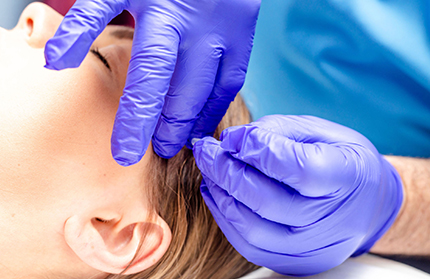Falls often occur after meal times and at night. Falls are often related to toileting and getting in and out of bed and chairs. Adults with higher fall risks are those with:
- History of previous falls
- Cognitive impairment
- Mobility impairment
Environmental Adaptations:
- Remove hazards (e.g., clutter, throw rugs)

African American physical therapist (40s) working with senior patient (80s) walking down stairs. - Sit in chairs that are not too low and don’t move / rock. Consider using a blanket under the cushion in the couch to raise the height or put blocks under the legs of the chair or couch to make the chair higher
- Move furniture against the walls to provide wider pathway to walk
- Push the bed up against the wall to keep the bed from moving during transfers
- Keep clothing, frequently used items easily accessible
- Make sure that clothing fits appropriately (make sure pants are not too long, etc.)
- Wear proper footwear (non-slip socks in bed, etc.)
- Keep a nightlight on in the bathroom and make sure rooms have adequate lighting
- Keep electrical cords up against the wall
- Use equipment in the bathroom such as a raised seat over the toilet, bars around the toilet and a bench in the shower
- If you use a walker or cane, make sure that they are the correct height
- If you use a wheelchair, make sure that the brakes are locked before getting in or out of the wheelchair
- Keep a portable phone or cell phone nearby so you don’t have to rush to get to the phone
- Consider getting a Physical Therapy and/ or Occupational Therapy evaluation to help work on strengthening and balance to help reduce fall risk

